Roman Soldier's Gear
Thrown Weapons:
Pilum and Iaculum (spear and javelin)
The Pilum
 The Roman pilum (pl. pila) was from about 5½ to 7 feet long and very light, as it was thrown before, and just prior to, engaging the enemy in melee, to disarm as much as wound them. The pilum was probably thrown at a range of about 30 yards, just as the Roman line charged. The small point could penetrate a shield and wound the man behind it, or even pierce armor.
The Roman pilum (pl. pila) was from about 5½ to 7 feet long and very light, as it was thrown before, and just prior to, engaging the enemy in melee, to disarm as much as wound them. The pilum was probably thrown at a range of about 30 yards, just as the Roman line charged. The small point could penetrate a shield and wound the man behind it, or even pierce armor.
As a shock weapon, we have seen a pilum go right through the side of an old car! Without destroying a seg in testing, we can only speculate what it would do to Roman armor... it doesn't bode well for any target though.
No Re-use by the Enemy
Finally, no matter what the pilum hit, its iron shank was supposed to bend, if only just a little, so that an enemy couldn't pick it up and throw it back at you. When the Romans were finished winning the battle, they would then have time to gather up their pila (pl.) and re-straighten them.
A soldier with a pilum stuck in his shield would find its weight now so cumbersome, that he'd probably ditch the shield. The pilum's head shape prevented its easy removal, and the iron shank prevented its being cut off. (Matt Amt of Legio XX notes however: "This shield-removing capability has always been over-emphasized — the pilum was designed to kill!")
ONE OR TWO
During the Republic, each legionary carried two pila, one light and one heavy. Most illustrations of Imperial legionaries though show only one pilum, but a few do show two, both tanged and apparently identical. It would appear that two pila were still carried, but that there were no longer "heavy" and "light" versions.
Description
The pilum consists of a long iron head, with a small, short point, and a wooden shaft. On the most common type, the bottom of the head widens into a flat tang, which is riveted into the widened top of the wood shaft. The second type has a socketed head, and a third type, less well-known, has a spike tang. In the 1st Cen. AD, some tanged-pila are shown with a spherical weight, presumed to be lead, behind the joint block. Apparently the weapon had become lighter over the centuries, and the weight was added to increase its "punch." Who knows, but none have ever been found — only seen on statuary. Here's some hearsay: maybe the ball was wood!?
The pilum head is ca. 14" to 30" long, with pyramidal or barbed points ca. 2" long. The iron shanks are about ¼" thick (round) below the point, swelling to c. 3/8" or ½" square at the base. The tang is an inch or more wide, and can be rectangular or slightly flared. There is no evidence that the points were specially hardened — they penetrate simply due to their form.
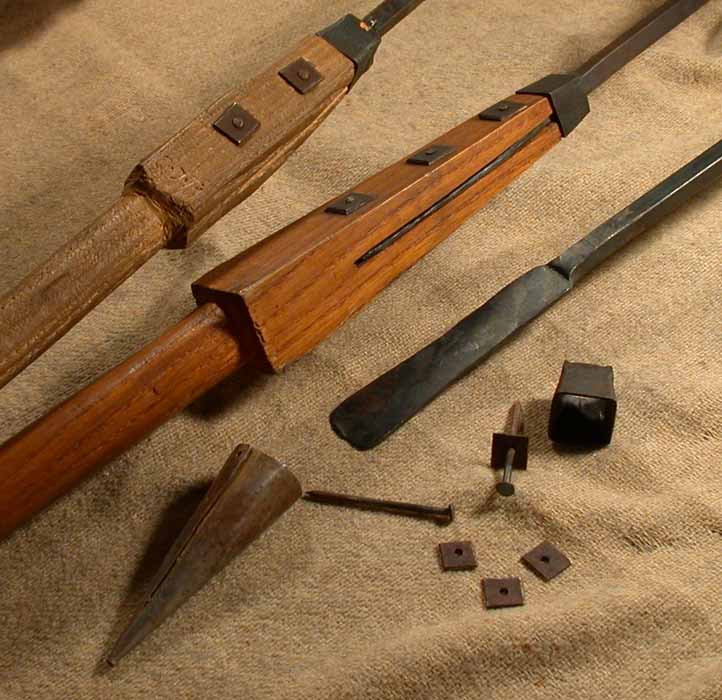

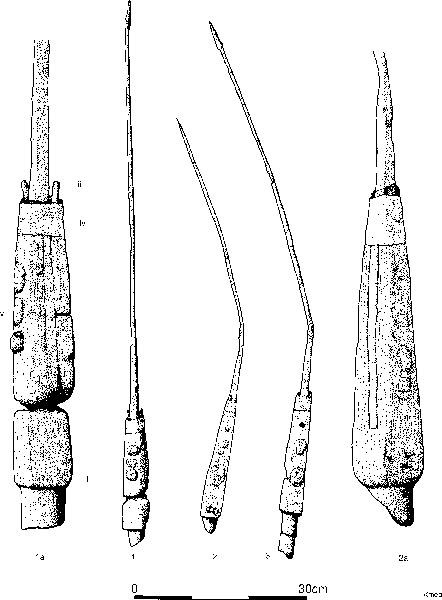
Drawings of relic pila. Socketed pilum on left, tanged version on right. Not to scale
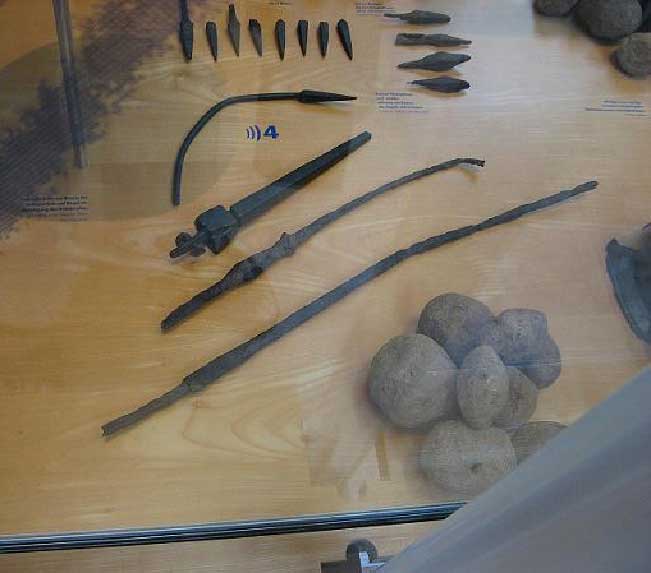
Iron pilum shanks, LWL Museum Haltern
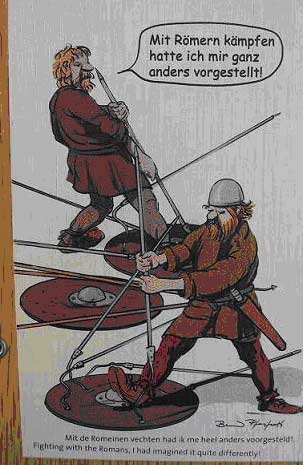 The pilum (plural pila) is one of the weapons most typical for the Roman army. Everyone can have spears and javelins, but only the Romans had javelins that would bend on purpose.
The pilum (plural pila) is one of the weapons most typical for the Roman army. Everyone can have spears and javelins, but only the Romans had javelins that would bend on purpose.
A pilum consisted of an iron shank about 60 cm in length that ended in a pyramidal head. The shank was attached to a wooden shaft either by a flat tang and clamp or a socket and rivets, bringing the entire length of the pilum up to 2 metres. It weighed between two and five kilograms — the versions during the Empire were usually the lighter ones, and it also seems the legionaries carried only one, not two as in the late Republic.
The point was hardened iron, but the shank was left unhardened which led to the following result.
The pilum would be thrown in salvos from a distance of 15-30 metres. The energy of the impact concentrated in the pyramidal point of the weapon. Not only would opponents be wounded, but the pila went through the shields where they got stuck. Since the shank was not hardened, the pilum bent and was almost impossible to yank out of the shield during battle. The only way to continue, was to drop the now useless shield. That was particularly effective against people who did not have much in the way of body armour, but relied on a shield, like the Germans.
Wood Rivets
Gaius Marius is credited with a design change about 100 BC. He found that the iron shank was not bending very often, so that the enemy were able to throw the pila back at the Romans. So he had one of the two iron rivets that held the parts together replaced with a wooden peg which would break or shear off on impact, causing the head to flop and making it unusable. After the battle it was a simple matter to replace those pegs One problem is that on many of the surviving pilum heads from this general era, the edges of the tang are bent to form flanges which essentially wrap around the wooden junction block. So they aren't going to flop if one rivet is missing! But of course few of these can be dated with certainty, and there do seem to be pilum heads with simple flat tangs which would function as the story says.
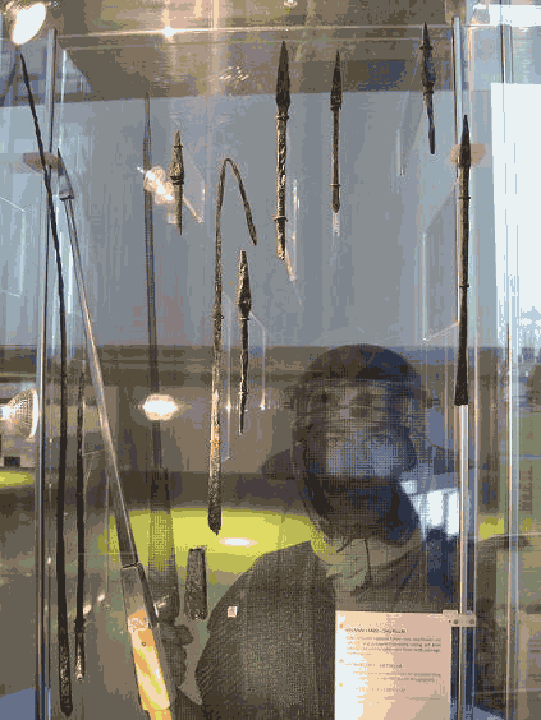
Another fine display of pila from the APX Museum in Xanten, going by the title "Crooked Lances." Well, not so much lances as javelins, but crooked they were. The pieces in the middle are original finds, framed by two reconstructed versions. The one to the left has a wooden shaft shaped in a way it would give the hold better leverage (you can see it in the background drawing as well). Another method was to wrap the shaft with leather or linen straps to prevent the hand from slipping on the wood.
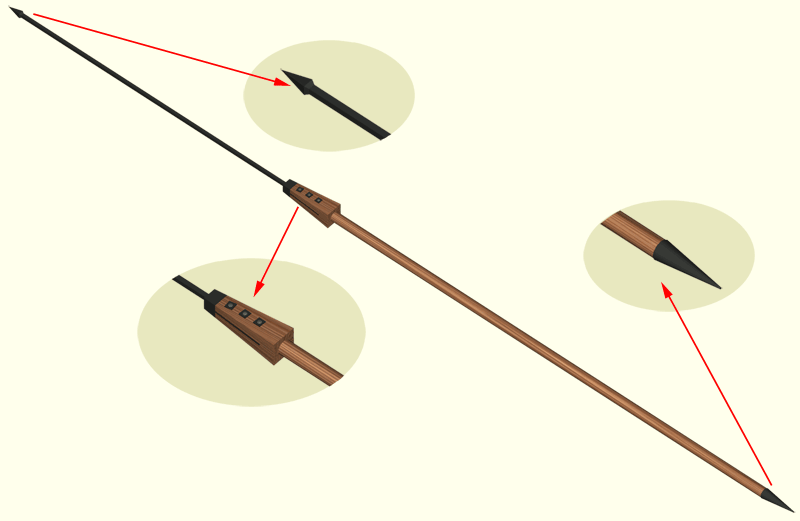
Iaculum
Many equestrian units seem to have been armed with light throwing spears called iacula or lancea. They were either carried in the hand which held the shield or they were transported in a spear quiver. The momentum and the range of the throw were enhanced by loops which were situated just behind the mass center of the weapons and which increased the spin. The range of the throws could easily be over 70 meters (79.5 yards).
Polybius (6.22) describes the iaculum as two cubits long and thick as a finger.
More to come...
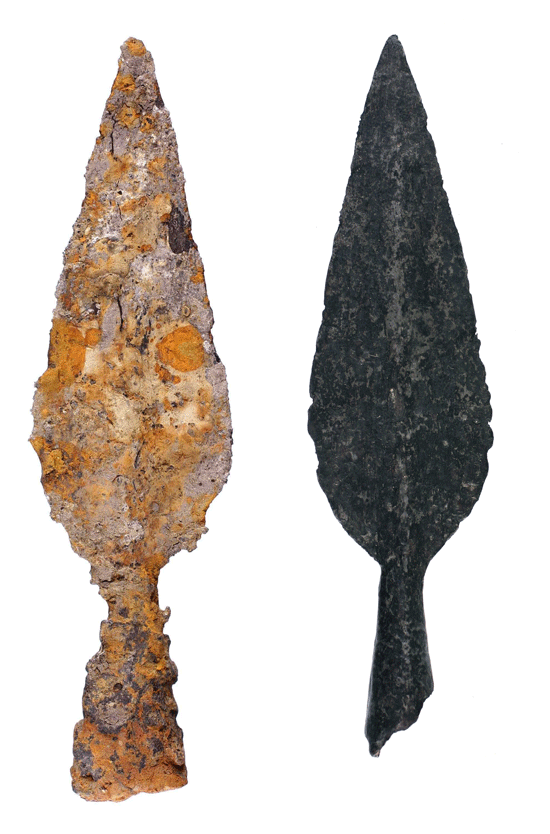
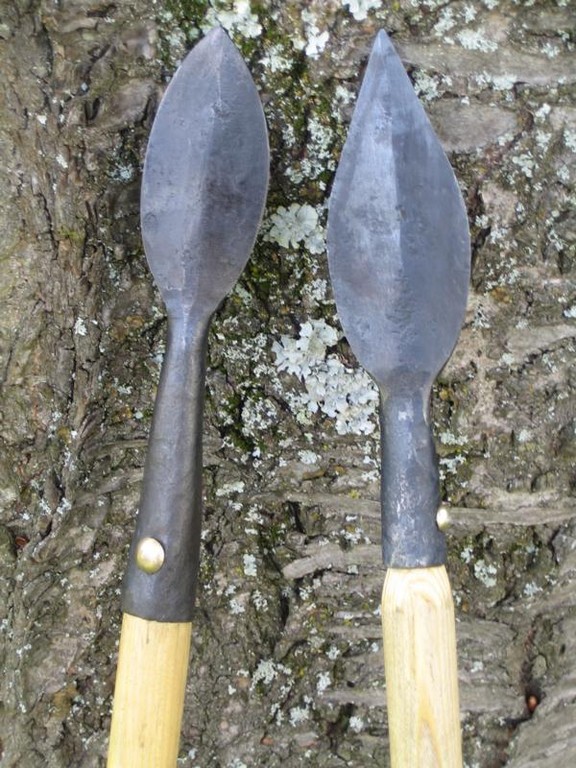
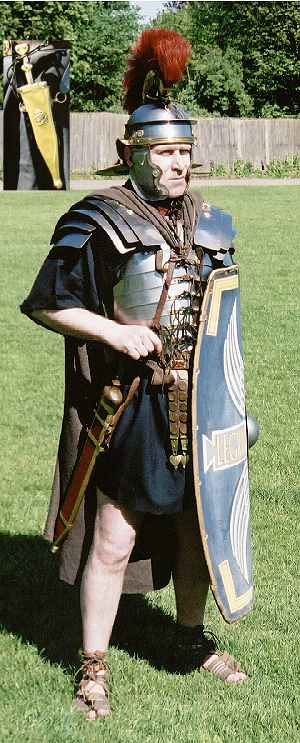 <<<< Run your mouse over and select an area on the photo to see a description of that item.
<<<< This photograph taken by the original author, Victius Maximus. Thanks to Optio Gaius Allius of Legion XIV and Verulamium Museum for their assistance
<<<< Run your mouse over and select an area on the photo to see a description of that item.
<<<< This photograph taken by the original author, Victius Maximus. Thanks to Optio Gaius Allius of Legion XIV and Verulamium Museum for their assistance




















